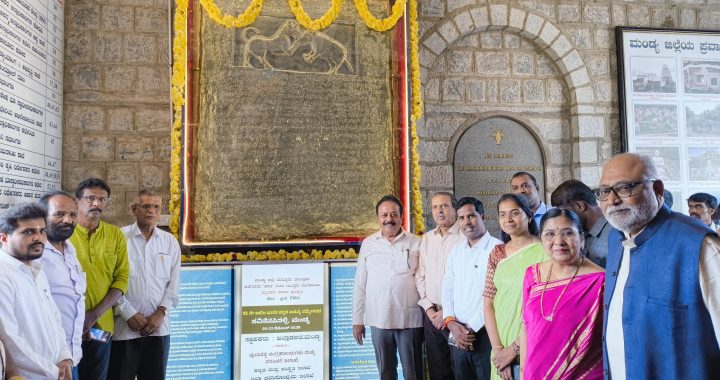Mysore Airport expansion plan may hit bonnet macaques habitat
3 min read
Shaurabh Anand & Suraj Nagesh
Mysuru: On the western side of the highway connecting Mysuru to Nanjangud, lies the village Mandakalli. Situated around 10 kilometres south of Mysore city, adjacent to Mysore Airport, it is surrounded by paddy fields, coconut-arecanut plantations and small lakes.
The village looks unremarkable at first glance. But step inside, and you will witness a rarity: individuals from two groups of bonnet macaque, a primate species endemic to Southern India, leaping between rooftops and coconut trees. In a time when wildlife struggles to coexist with human settlements, this village offers it a sanctuary.

This delicate human-animal coexistence was shattered on the morning of December
22, 2024, when farmer Siddayya stumbled upon a haunting sight: the headless body
of a young bonnet macaque, with a stray dog feeding on it. Owning only 15 guntas of
land, Siddayya is a 65-year-old marginal farmer, engaged in farming and occasional
daily wage work to support his family of six. Given the macaques’ image as crop
destroyers and troublemakers, such a scene might not have stirred much concern
elsewhere. While the retaliatory killing of bonnet macaques is common across many
parts of Southern India (Link, Link, Link), what happened in Mandakalli next was completely unusual.
After shooing away the dog, Siddayya knew exactly what he must do. A trench he had recently dug for planting coconut seedlings would serve a more solemn purpose.
With reverence usually reserved for a fallen family member, he approached the carcass barefoot. Following ancient Hindu burial customs, he carefully positioned the
young monkey’s remains facing south in the trench. He sprinkled the sacred trinity of
offerings – puffed rice, turmeric and vermilion over the grave. As he poured the water over it, he murmured prayers typically reserved for human departures.
When asked about his detailed rituals, Siddayya explained with quiet conviction why
monkeys hold a special place in his worldview. ‘Long ago, all of the forest areas
belonged to the Vanapalakaru – the forest guardians. When the Rakshasaru, the
demons, began to cause havoc, the Vanapalakaru prayed for help from the Lord. He decided to be reincarnated as Rama to eliminate the demons, but in order to do so,
the lord made these forest guards to be reborn as monkeys.’
Siddaya considers monkeys to be residents of the forest and is clear about why they
are in the village.
He explains, ‘Monkeys now go hungry when forests are converted into farms and communities. If this continues, where will they get food? (ellige hogbeku avella aaharakkagi) That’s why they’re sneaking into households these days.’
Siddayya’s concern for the bonnet macaques speaks of a larger crisis: as human
development encroaches on spaces for wildlife, common and ‘least-concern’ (IUCN
Red List category) species like the bonnet macaque are fast losing their ground.
A 2017 study (Erinjery et al. 2017) reports that due to the disappearance of suitable
habitat for bonnet macaques, their population have declined by more than 65% over the past 25 years.
The disappearance of large Ficus trees, present along the roadside and the conversion of vegetated areas to urban spaces are the major contributing factors. The uncertain fate of bonnet macaques in our landscapes have also been raised previously (Singh et al. 2011, Kumara et al. 2010)
Siddaya did whatever he could do to show his reverence towards a wild neighbour. However, these acts of reverence could soon be futile to sustain wild animals in our ‘ordinary landscapes.’
The Mysore Airport expansion and creeping urban sprawl are already transforming the area. The process of acquiring around 200 acres of land for Airport expansion is already in process. Given the proximity of the village to the Airport, it is very likely that a large part of the village may come under the airport
premises. Sensing the future development prospects, private realtors are acquiring
land in this village at a rapid pace (source: personal interviews). If this trend
continues, this refuge for bonnet macaques may soon be lost forever.
The Siddaya story could be the last of its kind. As evening falls, the distant calls of
the macaques echo through Mandakalli’s fields – a haunting reminder of this
coexistence on the brink of vanishing.
(Shaurabh Anand is a faculty at Azim Premji University. Suraj Nagesh is a researcher at Azim Premji University. The views and opinions expressed in this article are those of the authors and do not necessarily reflect the views or the positions of the organisation they represent)
– Team Mysoorunews







